PERSONAL
4,968
Perception of Bodily Proportions
9 years ago
I'm trying to distract myself from my brain by working on games, as that's really all I've known for the past few years. Uncertain of which of my various projects to direct my attention towards, I found myself drawn to one called Cultivate, where you design and look after little humans whose variable appearances are generated purely by code. While I should be adding features in order to make it into a playable game, instead I seem to spend an awful lot of time just looking at the people it randomly generates, thinking a lot about attractiveness and how we stylise our bodies in art. How drastically skewed proportions still register as human, how we're drawn not to realism, but to that which surpasses it...
My head's still hurting, and I won't know if my tumour's an immediate worry until next week... though I've recovered to the point where I can go out for long solitary walks with only occasional feelings of my head swimming or disorientation. Maybe I already said that though. It feels like there's something slightly off in my head... though I suppose I've been feeling that way for a while. The brain worries are being replaced by the familiar depression and isolation, though - maybe I've already said that too - and I've got an awful lot of free time... hence the return to also-solitary games development.
This game, Cultivate, will be some kind of person-raising sim, sort of like a poor man's version of The Sims in more ways than I'd prefer. I'm personally impressed by it because the people are drawn entirely by code, my code; no premade graphics are used at all. Just a bunch of coordinates that lines, curves, and colour fills are drawn between. I harnessed my knowledge of anatomy and proportions to write code that produced something that (I hope) registers as human. So I'm pleased with it in a way that a mother might be pleased with her child, even if it's unremarkable to everyone else. Because I made it. Me!
![]()
This image shows some of the possible variation in appearance between individuals, though not much as this particular screen first generates seven completely random people, then I can select two and they're 'bred' together, clearing the screen and filling it with seven of their offspring. I can keep 'inbreeding' in this manner to 'sculpt' the population by selecting for certain traits; I could breed the two children with blue eyes to produce a full set of likely-blue-eyed children, then choose the two with the longest hair repeatedly to propagate that trait, etc, etc. Though breeding will be a much longer process in the final game, where you have to have people flirt and raise children individually, I'm having a lot of fun (if that's the right word) doing this instant reproduction repeatedly just to see what comes up. These images were all made after at least one breeding, so all the people in them are 'related to' one another and as such look similarish.
I keep making screenshots of every pretty or interesting-looking person I generate, and could show them all day... but I'll leave it at just three of these for now.
![]()
![]()
I do find it interesting though that I find any of these pretty at all, since the proportions are obviously quite exaggerated. It's largely for practical reasons, as the game is for mobiles and I want the variable faces to be easily distinguished even on small screens.
When I showed this to my friend a while ago, though, she reacted as if it was a game aimed at children, and I think the proportions were the reason for that. It seems that a big part of the 'dark and gritty' style that indicates that a work is 'for adults' is relatively realistic proportions, while these 'chibified', childlike proportions seem to suggest the work itself is for similarly-proportioned people.
The proportions don't even register as wrong to me, though, which I find interesting from a psychological point of view. I'm not sure whether it's familiarity - I designed these and have been looking at them for months - or whether it's something else, but I think way too much about this sort of thing so I'd like to ramble a bit about it.
As a bit of a curious experiment, I tried tweaking the proportions of these people in Photoshop to something 'more realistic'...
![]()
On the left is what the average woman looks like in this game, with in-game proportions. As I said, it registers as 'normal' to me, likely due to familiarity.
In the middle is an initial attempt - without reference - to tweak the proportions to make them more 'realistic'. I was aware that they were probably still off, that the head was too big and the legs too short, but - so conditioned by seeing hundreds of the dwarf-proportioned ones - I felt that perhaps it wasn't
too far off what people actually do look like.
But then I got a reference photo, and tweaked it again to match the proportions of that. The result, I think, looks completely bizarre! A tiny pinhead atop a chunky, lanky, lumbering body. No matter how much I look at it, the head looks too small, even compared to the photo beside it, despite the fact that I resized it while semitransparent with the photo underneath so then I could be sure the proportions were exactly the same. I'm sure it'd look different - better - if all the line thicknesses were consistent and the graphics were designed with those proportions from the start... But still, it does look very odd to me.
The 'dwarven' proportions of the game models stand out all the more when directly next to a photo, too; it's only with that comparison that they register as odd to me. Perhaps that's how everyone who's not seen the game before would see them, though, as they don't have the history with them that I do.
![]()
There are a few psychological concepts that come to mind when wondering
why exaggerated proportions register as normal, or even superior to realistic ones.
![]()
One involves an aspect of neuroanatomy called the
∞ cortical homunculus ∞, which is the idea that we have a 'map' in our brain with regions corresponding to the different parts of our bodies. The sizes of the brain regions aren't proportional to those of the body parts, though; more sensitive parts utilise bigger regions. So our perception of our own hands and tongue are drastically greater than those of, say, our shins; something commonsense and easily noticeable if you try and shift your spotlight of attention to your hands or to your shins. It's unlikely that you'll feel much at all from the latter, at least compared to the former.
This model that an artist designed to depict the homunculus regions as a figure makes it clearer:
![]()
If we subconsciously perceive our own bodies as such, then perhaps we perceive others similarily, too, and art styles that devote space to body parts more in line with our cortical interest in those body parts might register as more interesting to us - on some primal level - than those that attempt to be more realistic. It fits somewhat with the relative obviousness of deficits in art, too; drawings with especially well-done hands and faces register as much nicer than those where those elements are drawn badly (though our particular interest in faces is a whole other topic). I'm sure much has been written about all this; I'm just writing out my idle ponderings here!
We - women especially - are biologically programmed to find babies cute so that we take care of them, so proportions that emulate theirs - large eyes, stubby limbs - trigger those parts of our mind and reach the conscious mind as appeal. I think this is well-known already, though I'm sure it plays a big role in our assessment of proportions in art.
There's another concept too which I can't for the life of me remember the name of (and Googling for it is a challenge if I don't even know what it's called!). It's the idea that we're biologically programmed to be drawn to certain features, and the more defined the feature, the more we're drawn to it. However, this interest continues to increase even when the bounds of reality are broken.
For example,
∞ waist-hip ratio ∞ in women is regarded (in Western cultures at least) as a sign of attractiveness to men; the narrower the waist, the more attractive the woman (and girly waists on guys are seen as unattractive to women; bad news for me!). However, narrowing of the waist beyond what you'd ever see on a real person continues to increase the appeal to men, so while a realistic ratio of 0.7 would be more attractive than 0.8, a completely unrealistic ratio of 0.4 would be even more attractive... hence the wasp-waisted women in cartoons and the like (I'll get to this again in a minute).
Another example I remember of the same phenomenon was a certain kind of beetle where the males prefer females who are large and lustrously brown... so they're found swarming all over beer bottles in landfills, which are more lustrous and large than any real female, attempting to fornicate with them endlessly until they die. It's an odd, interesting and easily recognisable psychological phenomenon; I just wish I could remember the name those who study such things have given it!
While thinking about this yesterday, I got curious about the proportions used for Disney characters, especially women, knowing there'd be guides for artists out there since a lot of people like to draw in that kind of style. I found what I was looking for, but - surprisingly - a bunch of journalistic articles too...
![]() ∞ This deviantART tutorial ∞
∞ This deviantART tutorial ∞ - the sort of thing I was fully expecting to find - was apparently
shocking enough to be reported by
∞ journalists ∞, which I find sort of bizarre, as I always do when there's some rare intersection between 'my world' and the 'real world'. It's notable, apparently, because Disney princesses are ego-damagingly unrealistic in their proportions (
∞ their eyes are wider than their stomachs ∞); they inspire lifetimes of body shame by introducing little girls to unrealistic standards of beauty, etc.
As an artist - a male artist - I was internally defending the exaggeration of proportions, annoyed at the idea that there should be some expectation that we make our fantasies bound by the boring confines of reality. I'm a big fan of stylising and exaggeration; of depicting not what
objectively is but what we /subjectively perceive/; it's a big part of my own work, and I love the idea of art being a window into what individuals or our culture as a whole sees as an ideal or what they see when they look at the world. Whether it's different from what I see. We can never get into others' minds to directly experience their individual
∞ qualia ∞ - what, say, red is like for them - but how they draw or paint what they see can at least give some indication of what their unique view of the world is like compared to our own.
Women's wasp waists as drawn by mostly male Disney artists seemed fine to me for that reason, for the psychological story they tell... But then I saw
∞ this thing ∞, where someone had edited Disney princesses to have more realistic proportions.
![]()
I was fully expecting the previously-described psychological effect to take hold, for me to prefer the narrow-waisted exaggerations and to see the more 'realistic' ones as unappealingly chunky, but I was surprised to find that I
prefer the more lifelike ones. Not in some kind of 'woo, feminism!' way or anything (an attitude I imagine fuels much of the admiration for things such as this or
∞ 'plus-size' variations of these same princesses ∞), but on a primal, carnal level. I expected that men who'd criticise exaggeration of women in art would consciously ignore their beast within with the intention of impressing others, showing how progressive they were and such, 'lying' in a sense (to themselves as much as anyone) to be a 'white knight', but perhaps it really is less put-on than I'd previously imagined.
Of course, it speaks volumes about my own biases and warped perceptions that I ever thought that way at all, and that I'm surprised that my brain responds this way to something that shouldn't be a shock at all... But I'd be the first to admit that I'm driven by impulses that are both irrational and shameful. I know there's often a conflict of interests between the cerebral mind and the bestial libido. That learning to master the reins while hiding and denying the beast is a big part of civilised life.
I'd still defend exaggeration of the figure in art, however; I don't think we 'should' be drawing people with realistic proportions. But! I do think that it can reach a point where the exaggeration just comes across as bizarre and off-putting. I'm sure it's subjective and varies based on life experiences (I'd bet those who've been raised in Japan or been exposed to much Japanese media would be more receptive to 'chibi' proportions), but for me personally, screenshots of a recent game called
World of Final Fantasy seemed so exaggerated that they put me off wanting to play it at all.
![]()
When the whole body is smaller than the head, I think that
that is a bit too much. And yet despite being so unlike how we really look, they still register as human... I find that quirk of our psychology especially odd.
I wonder whether sentient aliens - whose minds and perceptions would have evolved very differently to our own - would see that and know that they're supposed to be human? What might their artistic depictions of their own bodies be like? Would we see their art and know it was meant to be them? I wonder that a lot, and it's one of the biggest reasons I'd love to meet other intelligent species.
But what of animals? Do they understand that our cartoons of ourselves are supposed to be humans? Do they see our cartoons of them as themselves? We can see something like this and immediately understand that it's supposed to be a dog and a cat...
![]()
...but would a dog or cat see that and see a dog or cat? Or would they just see nonsense, as the stylisation doesn't match their own cognitive abstractions? I wish I could be a dog for a moment so then I could know. Does it require abstract thought to make sense of such things at all? Probably!
Anyway. As someone who's into both psychology and art, I'm fascinated by what our depictions of ourselves and the world say about our minds. I feel I should read more about this though to see what acedemics have had to say about it all...




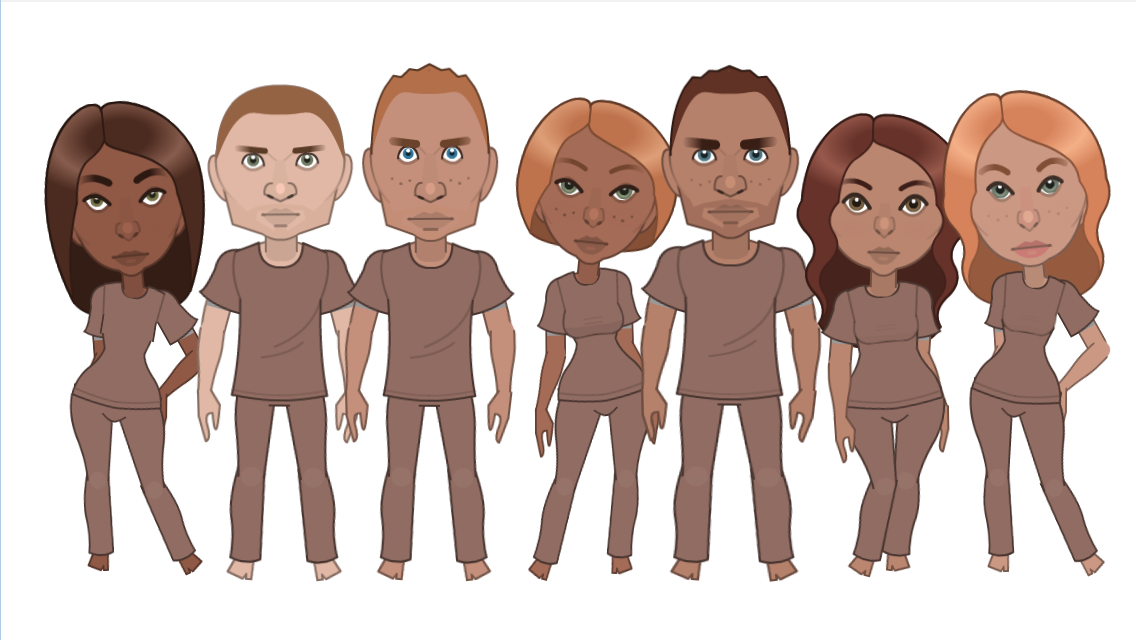
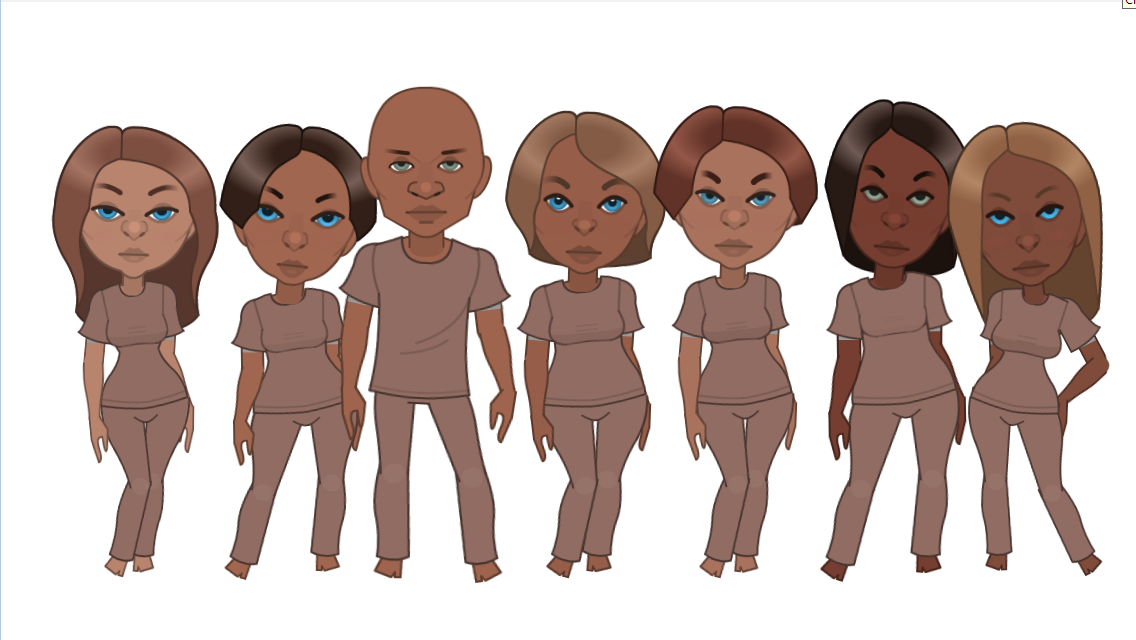
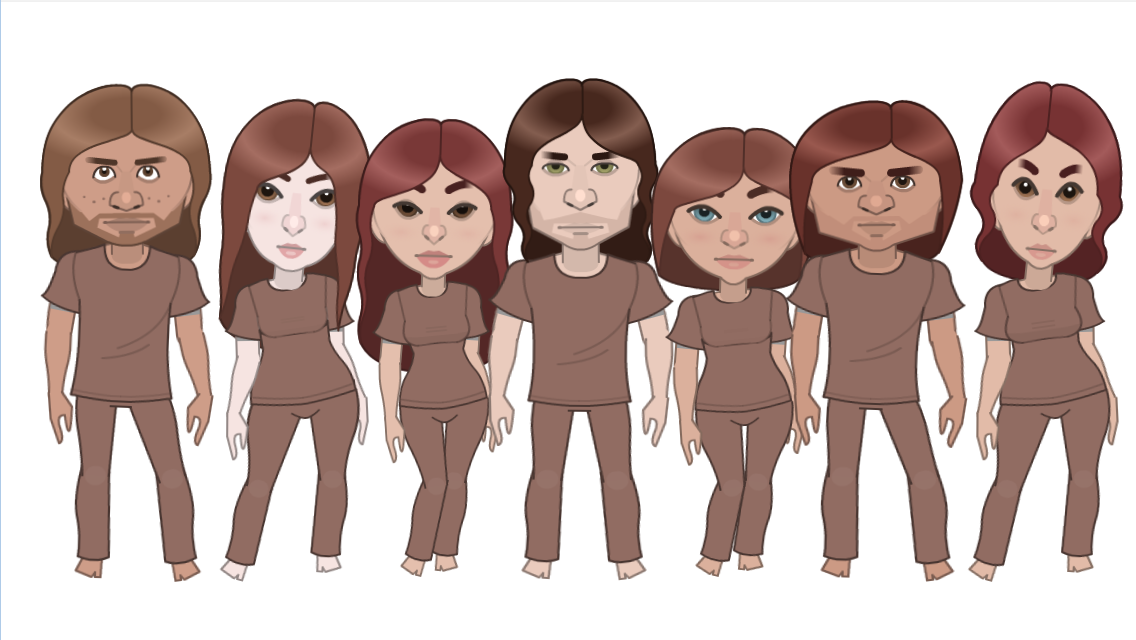
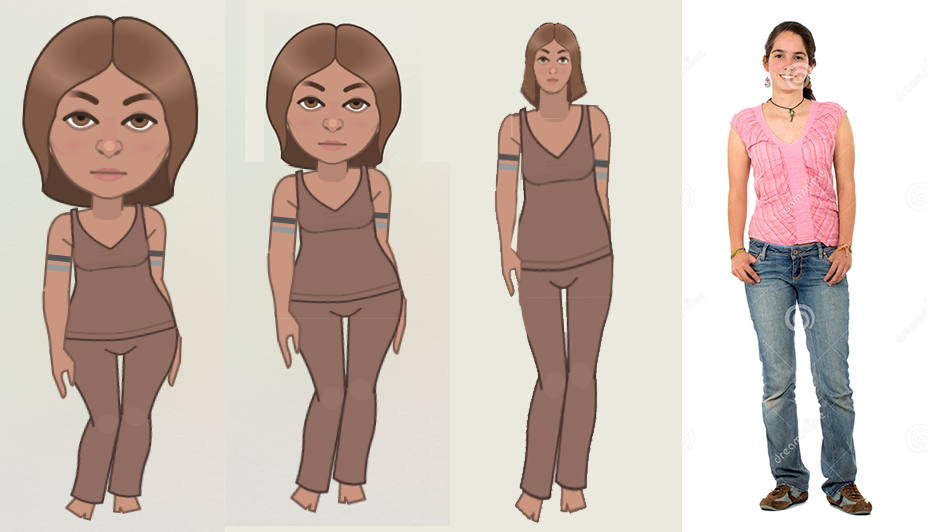


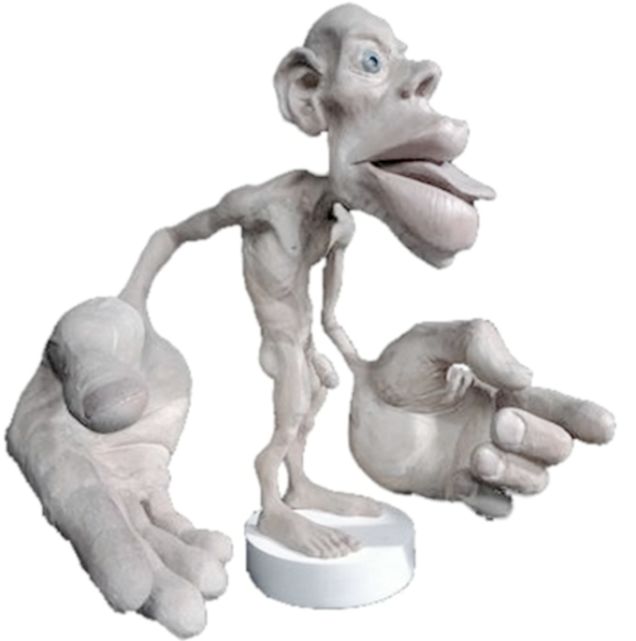


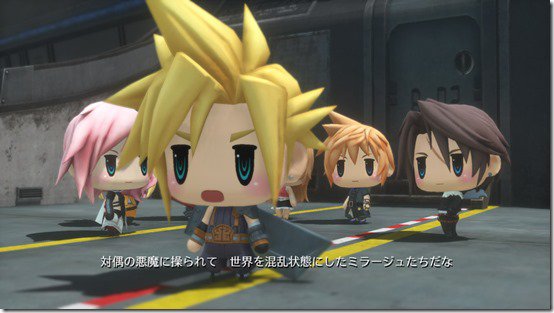

0